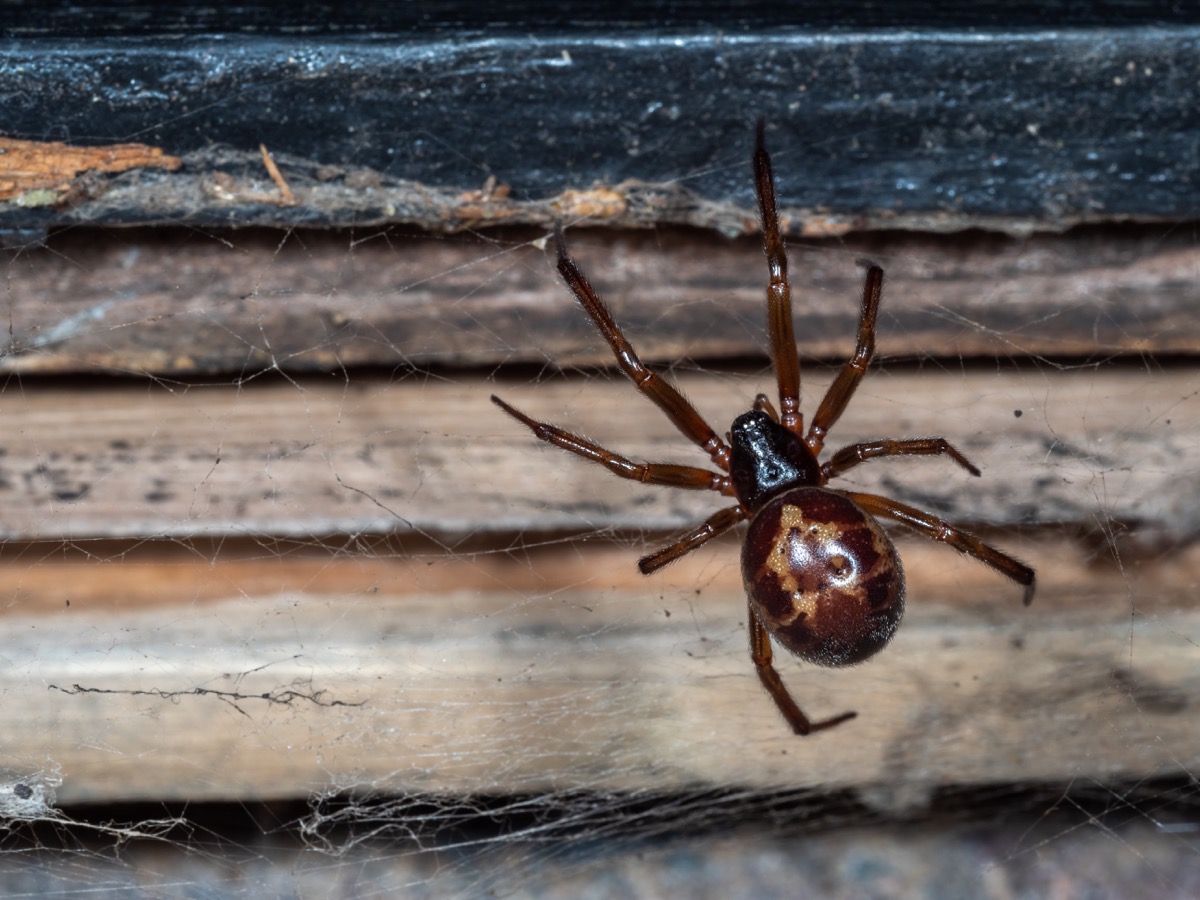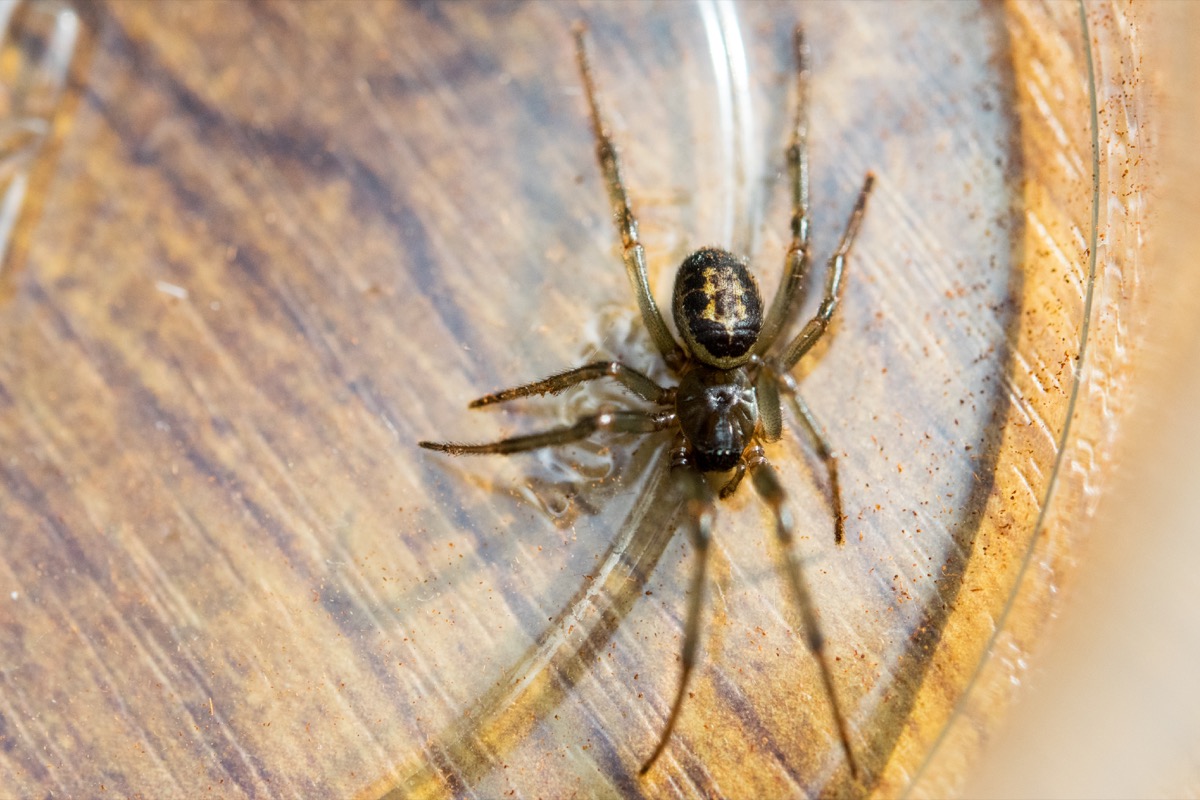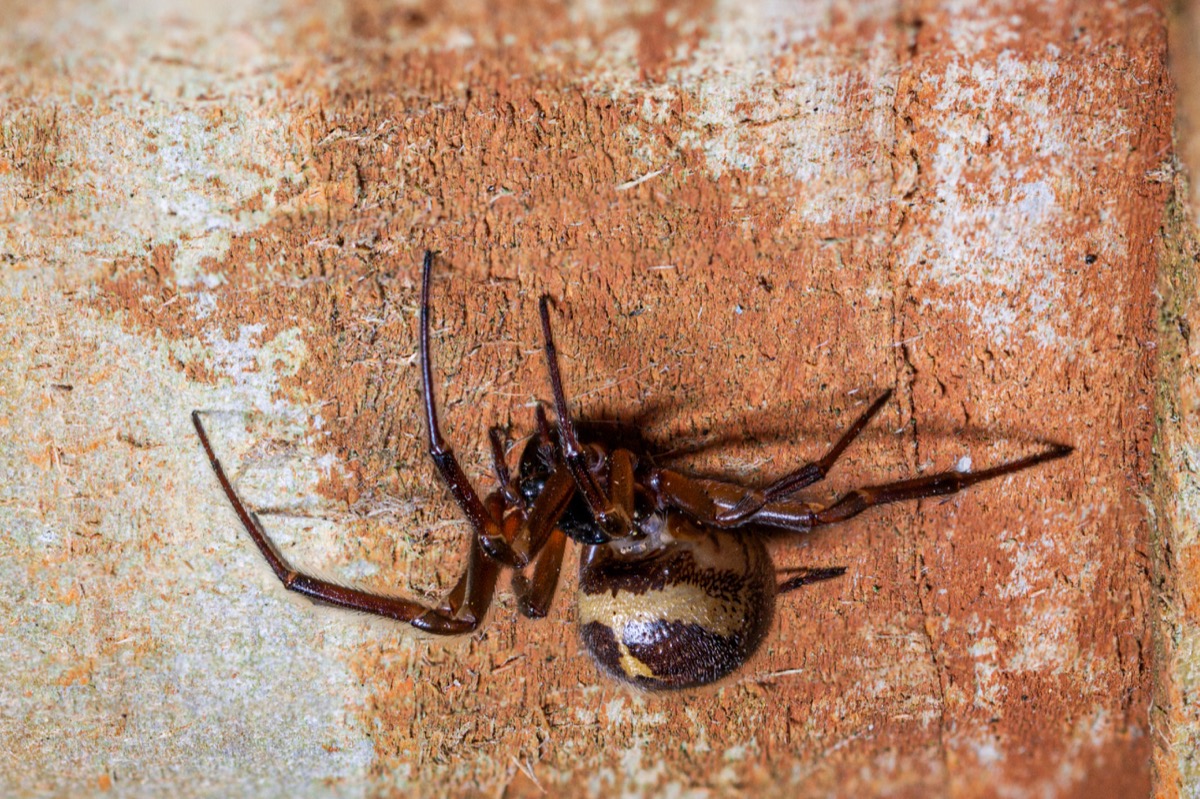This “Harmless” Spider Could Send You to the Hospital, New Study Says

No one likes to encounter a spider in their home. But the truth is, spiders get a bad rap. As the Mayo Clinic explains, most spider bites are harmless—in fact, the arthropods are often scapegoats for other bugs or issues. “Many bites attributed to spiders turn out to have been inflicted by other bugs. Skin infections also have been mistaken for spider bites,” the experts at the Mayo Clinic explain.
They claim that “only a few types of spiders have fangs long enough to penetrate human skin and venom strong enough to hurt humans,” citing two U.S. species in particular: the black widow spider and the brown recluse spider. But now, you can add another spider to that list. A recent study found that one spider that was formerly believed to be relatively innocuous could actually send you to the hospital with its bite. To see which spider you need to watch out for, read on.
RELATED: This Is the Most Painful Insect Sting in the World, Scientist Says.
A new study found that a noble false widow spider bite can lead to hospitalization.

The noble false widow spider, which resembles the black widow, has been overlooked for decades. The U.K. Natural History Museum described the spider as having a “small and relatively harmless bite.” Now, a May 27 study out of the National University of Ireland Galway found that the noble false widow does actually have notable public health implications.
The study found that the noble false widow can leave a bite that requires hospitalization, with some victims even experiencing reactions similar to that of a black widow bite. In a statement, the study’s lead author John Dunbar, PhD, said the research “confirms without a doubt that noble false widows can cause severe envenomations (the process by which venom is injected).”
RELATED: If You See This Bug in Your Home, Don’t Step on It, Experts Warn.
The noble false widow is spreading throughout the world, including in the U.S.

While the noble false widow spider used to be confined to a couple of countries, the spider’s reach is growing. According to the new study, the noble false widow spider has expanded in both density and range, and “now has the potential to become one of the world’s most invasive species of spider.” Researchers believe there’s a new genetic mutation within the spider that allows them to be more adaptable.
Noble false widow spiders tend to hitch a ride on containers and crates to spread throughout the world. They can now be found in Europe, North Africa, West Asia, and parts of North and South America. In urban parts of Ireland and the U.K., the noble false widow has become one of the most common species of spiders.
They were first spotted in the U.S. in 2011 in Ventura County, according to Insight Pest Management. The company noted that the noble false widow is “known for proliferating quickly in regions where it is not native,” so it could easily spread.
RELATED: For more up-to-date information, sign up for our daily newsletter.
The majority of bites from a noble false widow occur while you’re sleeping.

Entomologist and pest control expert Ryan Smith told Best Life that noble false widow spiders are not generally aggressive. However, “when threatened or trapped, let’s say in your clothing accidentally, they can bite you as a means of defense,” Smith said.
In fact, the new study found that 88 percent of noble false widow spider bites occurred while the victim was asleep or the spider was trapped in clothing. Additionally, almost all of the bites happened in and around the home.
Symptoms from a noble false widow bite vary from mild pain to a severe infection.

If you have a bite and you’re not sure what the culprit was, you’ll want to monitor your symptoms. According to the new study, symptoms can range from mild to debilitating pain and mild to intense swelling. Some people experience “tremors, reduced or elevated blood pressure, nausea, and impaired mobility.” On rare occasions, victims developed minor wounds or needed to be treated for severe infections.
Pest expert Jordan Foster told Best Life it typically takes about 20 minutes for symptoms to begin, and the bites usually last for one to two days. While most people don’t need medical attention, he noted that some people develop severe reactions.
Following the bite, you should wash the area with soap and water and apply an ice pack or cold compress to reduce swelling, Foster says. Avoid itching the bite to lower the risk of it getting infected.
RELATED: If You Live in These States, Brace Yourself for More Copperhead Snakes.